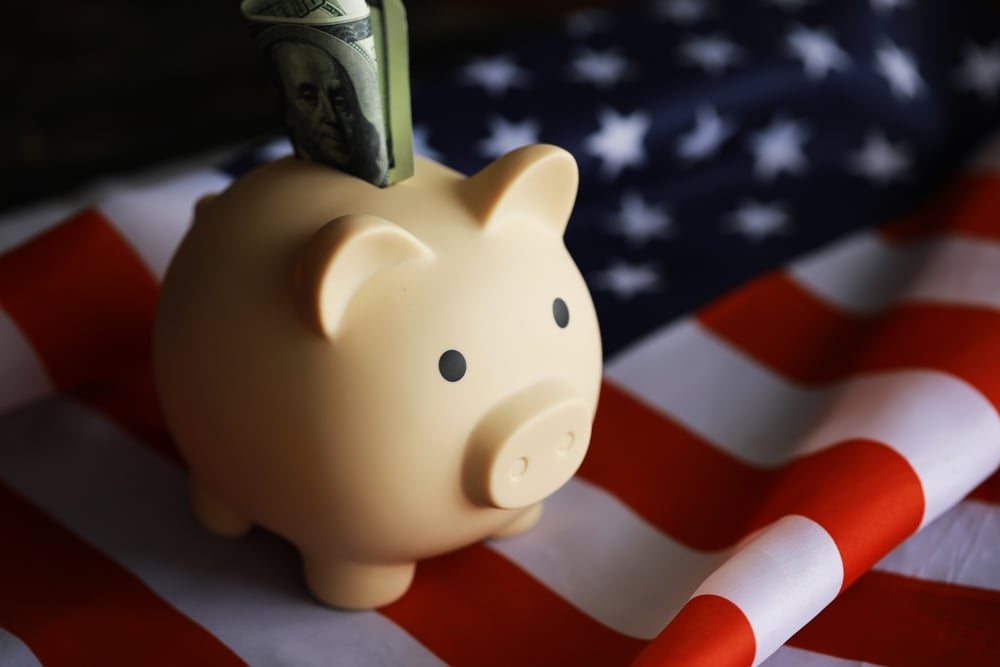Most content creators think they understand equipment deductions: track receipts, claim business use, and file Schedule C. What they don't realize is that generic small business tax advice is costing them thousands annually in missed opportunities. The problem is that most tax professionals treat content creation like traditional retail or service businesses, completely missing the unique advantages that creative operations present.
Your $4,500 color-accurate monitor isn't just office equipment, it's a revenue-generating asset that may qualify for accelerated depreciation. That $25,000 camera kit you bought in October? The timing and method of that deduction could swing your tax liability by how you structure it.
In this article, you'll read about the specific tax code provisions that apply to creator equipment, learn advanced timing strategies that could swing your tax liability by thousands, and understand the documentation systems that keep you audit-safe while maximizing deductions.
Why do creator equipment deductions work differently than other businesses?
The IRS doesn't have a special section for "YouTube creators," but, if you know where to look, several tax code provisions align perfectly with how content businesses operate.
Section 179 and the Creator Advantage
Here’s what most tax professionals miss: Section 179 works particularly well for creators because your equipment purchases cluster around gear upgrades, new project requirements, or business expansion phases.
You’re not buying equipment steadily like traditional businesses. You’re making strategic investments that coincide with revenue growth. And with the reinstated 100% bonus depreciation for equipment purchased after January 19, 2025, you also have the option to deduct the full cost immediately even if Section 179 limits don’t apply.
| ⚠️Note: Your business cannot take a loss to take advantage of Section 179. |
When you buy a $15,000 camera package, $8,000 in lighting equipment, and upgrade your editing setup for $12,000 all in one year, you can immediately expense all $35,000 (as long as you have the profit available) under Section 179, which allows up to $1.25 million annually or bonus depreciation even if no profit is available in 2025.
Most small businesses can't fully utilize Section 179 because they don't purchase enough qualifying equipment annually; content creators often can.
The Mixed-Use Reality
Traditional businesses rarely face the complexity that creators deal with daily. Your iPhone 15 Pro shoots client content and personal photos. Your MacBook Pro edits videos and streams Netflix. Most CPAs apply conservative mixed-use percentages because they don't understand how integral this equipment is to your revenue generation.
Here's what matters: the IRS allows "reasonable" business-use percentages based on actual usage patterns. For creators, 70-80% business use often reflects reality, not optimism. The difference between claiming 50% (conservative) and 75% (accurate) on a $3,500 computer represents $875 in additional annual deductions through depreciation for mixed-use equipment.
Business Classification Advantages
Content creators often qualify for favorable tax treatment that traditional service businesses don't. If you're creating educational content, you may qualify for certain expense treatments under IRC Section 162. If you're licensing content or building intellectual property, different depreciation rules may apply to your equipment investments.
When should I buy equipment to maximize your tax savings?
Here's where generic tax advice costs creators the most money. Equipment purchase timing and depreciation elections dramatically impact your tax savings, but most practitioners use default approaches without considering your specific income patterns.
|
Method
|
2024 Benefit
|
Best For
|
Timing Advantage
|
|
Section 179
|
100% immediate deduction if you are showing a profit
|
High-income years
|
Full current-year benefit
|
|
Bonus Depreciation
|
100% as of January 2025
|
Income smoothing
|
Front-loaded with future benefits
|
|
MACRS
|
20% first-year deduction if it is a 5-year asset. There is also declining or double declining methods to take a bigger deduction upfront.
|
Predictable planning
|
Steady annual deductions
|
Real-World Scenario
You earn $180,000 in 2025 and purchase $35,000 in equipment after January 19, 2025. With 100% bonus depreciation in place, you can deduct the full $35,000 immediately. That means you lower your taxable income right away and save roughly $10,500 in taxes. There’s no need to spread the deduction across years or weigh Section 179 against bonus depreciation; the full write-off happens in 2025.
The De Minimis Safe Harbor Election
Most creators don't realize that equipment under $2,500 per item qualifies for immediate expensing if you make this election. The key is that this applies per item, not per purchase. A $4,500 computer and $1,800 monitor purchased together represent separate items. The monitor qualifies for immediate expensing while the computer follows regular depreciation rules.
Listed Property Strategy
When business use exceeds 50%, you avoid restrictive documentation requirements and unlock favorable depreciation options. This is why accurate usage tracking isn't just compliance; it's strategy that opens up better deduction methods.
How do I properly split personal and business use on the same equipment?
This is where many creators either leave money on the table or create audit risks.
Time-Based vs. Function-Based Allocation
The IRS accepts different methodologies depending on equipment type. A camera used exclusively for business during work hours but occasionally for family photos can qualify for 85-90% business use if time allocation supports it. Compare this to a computer handling both business and personal tasks daily; time-based tracking becomes more critical for accuracy.
Revenue Correlation Documentation
Smart creators document how specific equipment contributes to revenue generation. Your $2,800 lens enabling macro product photography for sponsors creates direct revenue correlation supporting higher business-use percentages. This documentation proves crucial during audits and justifies legitimate but optimized allocations.
Equipment kept in dedicated office space supports higher business-use allocations. The IRS views a camera stored in your home office differently from one in your bedroom closet. Understanding your home office deduction options creates additional context for equipment allocation strategies.
Professional Maintenance Opportunities
Color-accurate monitors require professional calibration. Cameras need sensor cleaning. Audio equipment requires performance maintenance. These aren't general repair expenses. They're equipment-specific maintenance directly correlating to revenue quality. Document the business necessity and deduct the full cost.
The Repair vs. Enhancement Distinction
Here's where sophisticated tax planning makes a difference. Adding RAM to your editing computer typically qualifies as a repair (immediately deductible) rather than improvement (must be depreciated). Software integration costs, such as color grading software for your monitor setup, often qualify as equipment-related expenses with favorable depreciation treatment.
What records do I need to keep to stay audit-ready?
Content creators face higher audit risk because the IRS scrutinizes creative professions more closely. Your documentation must exceed standard requirements while remaining manageable.
The Three-Tier System
Maintain purchase records (receipts, invoices), usage documentation (logs, calendars), and business justification (project records, revenue correlation). This approach satisfies IRS requirements while supporting your business-use percentages during potential audits.
Revenue Trail Documentation
Connect equipment purchases to revenue generation. When you buy a new lens, document which projects or clients require that capability. This creates business justification trails supporting your deductions if questions arise.
Schedule C Optimization
Report equipment expenses in appropriate categories rather than lumping everything into generic lines. Use "Equipment Rental or Lease," "Repairs and Maintenance," and depreciation sections properly. Proper categorization of business expense categories helps maximize current-year deductions while avoiding audit flags.
Consistency Requirements
Once you establish depreciation methods and business-use percentages, maintain consistency across years unless actual usage patterns genuinely change. The IRS flags dramatic fluctuations as potential audit triggers, so document any legitimate changes in usage patterns.
What advanced strategies do successful creators use?
Beyond the usual tactics, there are some more advanced techniques that internet creators can use.
Equipment Leasing vs. Purchase Analysis
For expensive equipment you'll replace within 2-3 years, leasing often provides better tax treatment than purchasing and depreciating. This particularly applies to camera bodies, computers, and technology that becomes obsolete quickly. The key is matching your equipment lifecycle to optimal tax timing.
Business Entity Optimization
LLC vs S-Corp elections affect equipment deduction strategies. S-Corp owners can optimize equipment timing through salary vs distribution planning, while LLC owners have more flexibility in equipment expense timing. The right entity structure can amplify your equipment deduction benefits.
Multi-Year Planning
Sophisticated creators plan equipment purchases around income fluctuations. High-income years favor Section 179 elections for immediate relief, while lower-income years might benefit from spreading depreciation deductions across multiple years to optimize marginal tax rates.
The Bottom Line
Creator equipment deductions work differently. Section 179, mixed-use allocation strategies, and clever approaches to purchase timing can swing your tax liability by thousands. As long as the right documents are stored and reported in an appropriate way, these methods can separate successful creators from those leaving money on the table.
Content creation tax planning requires specialized expertise that goes beyond generic small business advice. Your revenue streams, equipment usage patterns, and business structure create unique opportunities that most CPAs simply don't understand.
Ready to optimize your equipment tax strategy? Partner with our team today for creator-focused planning that could save you thousands while building a sustainable tax advantage for your business.








